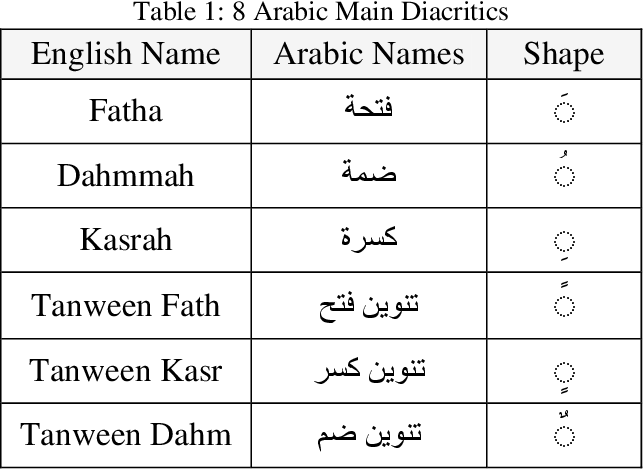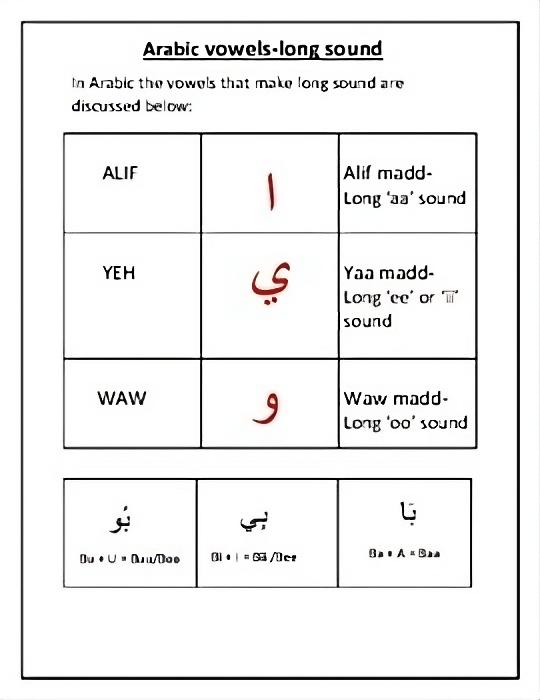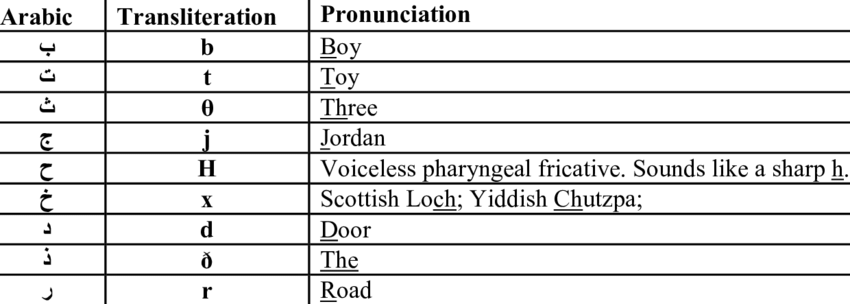Learning the Arabic alphabet is a crucial first step toward understanding the Arabic language, whether you’re interested in learning to read the Quran, engage with Arabic literature, or communicate in an Arabic-speaking environment.
Arabic has a rich, ancient tradition, and learning it is both rewarding and culturally enriching. Here’s a detailed guide to help you learn the basics of reading and understanding the Arabic alphabet.
If you want to learn basic Arabic Alphabets, sign up for a one week free trial of our Noorani Qaida course at our online Quran Academy.
Overview of the Arabic Alphabet
The Arabic script consists of 28 letters, each representing a consonant. Arabic is written from right to left, which may feel unusual at first but becomes second nature with practice. Unlike in English, where letters have a fixed form, Arabic letters can change their shape depending on their position within a word.
These forms are:
- Isolated: When the letter stands alone.
- Initial: When the letter is at the beginning of a word and connected to the following letter.
- Medial: When the letter is in the middle of the word and connects to both the preceding and following letters.
- Final: When the letter is at the end of a word and connected only to the preceding letter.
The 28 Letters of the Arabic Alphabet
Below is a table listing all 28 Arabic letters with their names, isolated forms, and pronunciations.

Unique Features of the Arabic Alphabet
a) Letters Are Written in Cursive
Arabic is always written in a cursive form. Even in printed text, letters flow into one another within words. This is very different from languages like English, where printed letters stand independently.
For example, the letter ب (baa) looks different depending on its position in a word:
- Isolated: ب
- Initial: بـ
- Medial: ـبـ
- Final: ـب
b) No Uppercase and Lowercase Distinction
Unlike English, Arabic doesn’t have uppercase and lowercase letters. However, letters still vary in form depending on their position within the word.
The Arabic Vowel System: Harakat
Arabic does not have independent letters for vowels as English does. Instead, short vowels are indicated by diacritical marks (called harakat) placed above or below consonants. These marks are usually omitted in everyday writing but are essential for beginners, learners, and religious texts such as the Quran.
- Fatha (َ): A small diagonal stroke placed above the consonant, representing a short “a” sound.
Example: بَ (ba) - Kasra (ِ): A small diagonal stroke placed below the consonant, representing a short “i” sound.
Example: بِ (bi) - Damma (ُ): A small loop placed above the consonant, representing a short “u” sound.
Example: بُ (bu)

In addition to these short vowels, Arabic also uses long vowels, which are represented by three specific letters:
- ا (Alif): Represents a long “a” sound.
- و (Waw): Represents a long “u” sound.
- ي (Ya): Represents a long “i” sound.

For instance, باب (baab) means “door,” where the ا (alif) represents the long “a” sound.
Learn more: Arabic Vowels Sounds – Arabic Diacritics/ Harakat
The Consonants of the Arabic Alphabet
Arabic consonants range from sounds that are similar to English, such as ب (b) and ت (t), to more challenging sounds like خ (khaa) and غ (ghayn). Some letters have no direct equivalent in English, which can be tricky for beginners.
Here’s a breakdown of some important consonants:
- ب (baa): Pronounced as “b” in “boy.”
- ت (taa): Pronounced as “t” in “top.”
- ث (thaa): Pronounced like “th” in “think.”
- ح (haa): A deep, guttural “h” sound, pronounced from the throat.
- خ (khaa): A harsher sound, similar to the “ch” in the German word “Bach.”
- ع (ayn): A deep, glottal sound unique to Arabic, pronounced from the throat.
- غ (ghayn): A sound similar to a French “r,” produced at the back of the throat.

Changing Forms of Letters
The form of a letter changes based on its position in a word. Some letters connect to the following letter on both sides, while others only connect on one side. A few letters never connect to the letter that follows.
Example 1: The letter م (meem) connects on both sides.
- Isolated: م
- Initial: مـ (as in مطر – matar, meaning “rain”)
- Medial: ـمـ (as in سلام – salaam, meaning “peace”)
- Final: ـم (as in علم – ilm, meaning “knowledge”)
Example 2: The letter ا (alif) never connects to the next letter.
- Isolated: ا (as in باب – baab, meaning “door”)
- Connected (initial or medial): It appears as ـا but never connects further.
Learning the Alphabet: Step-by-Step Process
a) Start with Basic, Common Letters
Start by learning letters that frequently appear in words, such as:
- ا (alif)
- ب (baa)
- م (meem)
- ل (laam)
These letters form the foundation of many simple words in Arabic, making them a good starting point.
b) Practice Writing
Practice writing each letter in its isolated, initial, medial, and final forms. Arabic calligraphy is an art form, and careful writing practice helps improve your understanding of how letters connect.
c) Use Mnemonics and Flashcards
Create or use mnemonic devices to help you remember each letter’s shape and sound. Flashcards, whether physical or digital, are also effective for memorization.
d) Read Simple Words
As you get comfortable with the alphabet, begin to practice reading simple words. Start with words that contain familiar letters and vowels, such as:
- كتاب (kitaab) – book
- باب (baab) – door
- قلم (qalam) – pen
Learn Islamic Studies Course online today!
Challenges and Common Mistakes
a) Confusing Similar Letters
Many Arabic letters look quite similar but differ in the number of dots or their placement. For example:
- ب (baa) has one dot below.
- ت (taa) has two dots above.
- ث (thaa) has three dots above.
Pay close attention to these details to avoid confusion.
b) Overlooking Diacritical Marks
At first, you may rely heavily on harakat (diacritical marks) to understand vowel sounds. However, as you progress, you’ll need to learn to read without them, as most Arabic texts omit them in everyday writing.
Tips for Mastering the Alphabet
- Engage with Arabic Media: Once you’ve grasped the basics, learn Arabic by listening to songs, watching TV shows, or reading simple texts. This will help you reinforce your learning.
- Take Structured Lessons: Consider enrolling in a formal Arabic class, either online or in-person, to get a structured learning experience.
- Practice Daily: Regular, consistent practice is key to mastering the alphabet and advancing your reading skills. Write out letters, read short texts, and listen to Arabic to reinforce your understanding.
Conclusion
Mastering the Arabic alphabet is the founding stone to learning the Arabic language. It might seem challenging at first, but with patience and practice, you’ll soon find yourself reading and writing Arabic with ease. Remember to take it step by step, focus on the letters and sounds, and enjoy the process of learning this beautiful language.
Join Noorani Qaida Online course to get a one week free trial!


